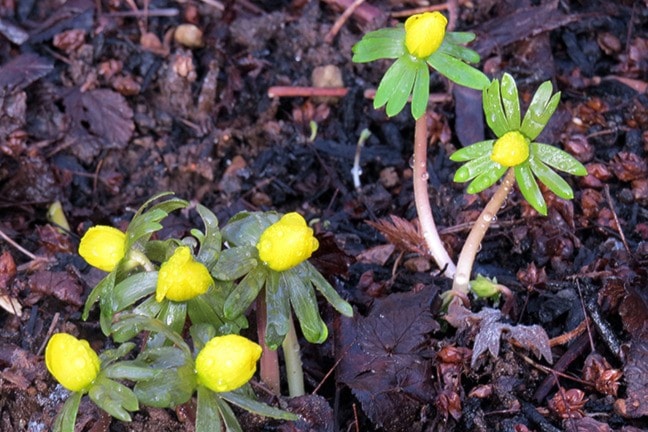Leslie Cox
Special to The Record
Glimpses of delicate yellow petals amongst the leaf mulch do much to brighten a part of our garden in January. Behold – the winter aconite.
If you do not have this specimen in your garden inventory, you may want to reconsider.
Known botanically as Eranthis (from the Greek words for “spring” and “flower”), this genus contains eight different species, all of which are assuredly amongst the most fuss-free plants for almost any garden. Frost-tolerant, they survive repeated coverings of snow with virtually no ill-effects.
All species are herbaceous perennials and early flowering. Some species, such as Eranthis hyemalis, bloom as early as January. They are native to deciduous woodlands throughout Asia, China, Japan, Korea, southeastern parts of Russia, and southern Europe stretching from the Balkan region to southern France.
Spring ephemerals, they grow on the forest floor, reaping the benefits from uninterrupted winter light before the tree canopy leafs out. Once the shade becomes dense, the leaves on the winter aconite die off and the plants go dormant until the following winter.
The plants themselves are dainty, growing to a maximum of 15 cm (six inches). The flowers are typically cup-shaped and yellow in colour. However, there are some new cultivars available with pale orange blossoms, straw-apricot colouring, white with tinges of green, yellow with green tinges, and a couple of doubles. One of the most unique is the Japanese species, Eranthis pinnatifida, whose white flowers are a perfect backdrop for its blue stamens.
By far the most common species is Eranthis hyemalis, which has naturalized throughout most of Europe, the UK, and North America. Indeed, this species easily spreads to form a lovely mat of golden colour.
The easiest way to start your patch of winter aconites is to buy a young plant in late winter and place it in the garden immediately. If you are lucky enough to find fresh seed come February or early March, direct sow these immediately under a deciduous shrub or tree. Cover the seeds lightly with some soil to hide them from ground-scrounging birds.
If you did not sow your seeds right away, do not panic. I have read comments from gardeners who claimed their Eranthis seeds germinated when sown months, even years later, albeit with poorer germination success, but success all the same.
Some nurseries and plant catalogues offer Eranthis tubers for sale. Be sure you purchase these fresh, and plant them right away. They do not take to drying out very well. This is also important if you are dividing your patch of winter aconites. Replant your divisions immediately in their new garden area.
Fuss-free, my goodness yes! Eranthis species are rarely bothered by any pests and hardly any diseases.
***
Speaking of pests…last year, the leaves on our camellia were a sickly yellow-green and covered with a sticky black fungus-mold. Doing an inspection, I discovered at least six ovisacs on the underside of most leaves, along with adult cottony scales. Our remedy: John sprayed the plant with dormant oil, aiming at the undersides of the leaves as best he could.
Since it is time to do our spraying chore on any plants needing a dose, I did a check on the camellia for signs of cottony scale (Pulvinaria floccifera). Only found a total of five ovisacs in a random search of about 50 leaves! John will spray the shrub again this year to get the last of the pests and then we will leave it alone.
Annual applications of dormant oil and lime sulphur are not recommended as these products kill beneficial insects, along with the pests.
